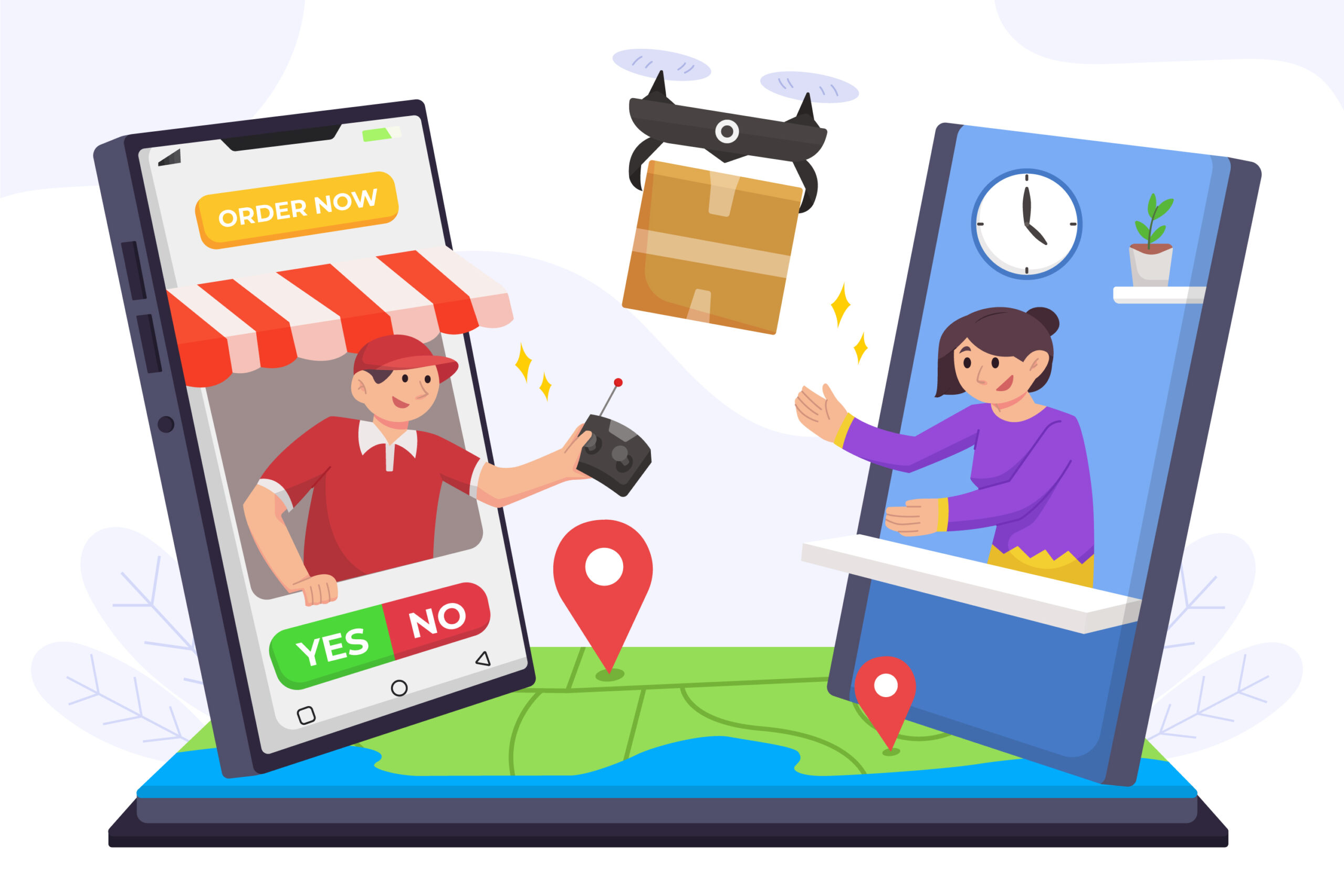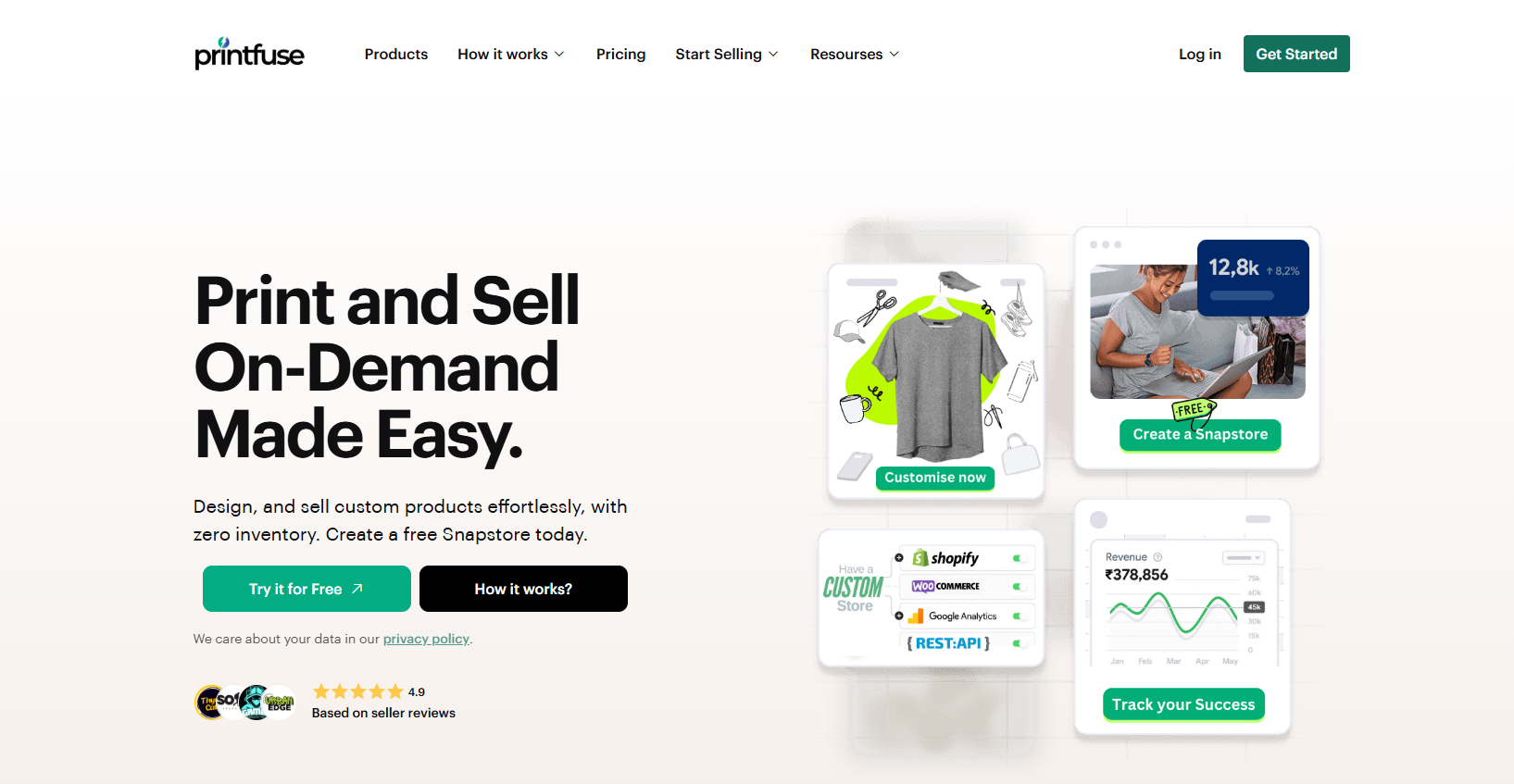This comprehensive guide will delve into ten dropshipping tips you need to know for 2025.
The world of e-commerce is booming, and dropshipping offers an exciting way to enter this dynamic market. It allows you to launch your online store without carrying physical inventory, making it a low-risk and accessible business model.
However, success in dropshipping requires more than just finding trendy products. To truly thrive, you need a strategic approach that prioritizes customer experience, operational efficiency, and effective marketing.
By implementing the strategies below, you can build a robust dropshipping business that stands out.<br>
Let’s get started.
Dropshipping tip, its impact, and strategies for success


1. Own Your Dropshipper's / Supplier’s Mistakes
Mistakes happen. Even the most reliable dropshipping suppliers can occasionally slip up. When this occurs, taking ownership of the situation and prioritizing clear communication with your customers is crucial. This proactive approach maintains customer trust and demonstrates your commitment to excellent service.
Impact: Transparently and effectively handling mistakes turns potential negative experiences into opportunities to build stronger customer relationships. This can lead to increased customer loyalty and positive word-of-mouth, which are invaluable for long-term business growth.
Strategies:
- Prompt Notification: Inform your customer when you learn of an error. Transparency builds trust and shows you value their experience.
- Offer Solutions: Propose solutions to rectify the issue, such as expediting replacements, offering discounts on future purchases, or providing a full refund.
- Stay Updated: Keep your customers informed about the resolution process. Regular updates prevent frustration and demonstrate your commitment to resolving the situation promptly.
2. Manage Your Inventory Levels Like a Pro: Avoiding Stockouts and Overstocking
Inventory management is crucial in dropshipping. While your supplier holds the physical inventory, you must closely monitor stock levels. Proper inventory management ensures you accurately reflect product availability, avoid stockouts that disappoint customers, and prevent overstocking that ties up capital.
Impact: Efficient inventory management enhances customer satisfaction by ensuring product availability and optimizing cash flow. This balance helps maintain healthy profit margins and supports sustainable business growth.
Strategies:
- Track Supplier Updates: Regularly check your supplier's inventory levels and update your store accordingly. Integrate your store with your supplier's system for real-time visibility.
- Set Minimum Order Quantities: Establish minimum order quantities to avoid fees for small orders and negotiate bulk discounts to reduce costs.
- Analyze Sales Trends: Monitor sales data to identify popular products and adjust stock levels based on demand. Utilize sales forecasting tools to anticipate future trends.
- Handling Out-of-Stock Orders: Develop a clear communication strategy for out-of-stock situations, offering alternatives or refunds promptly to minimize customer frustration.
3. Streamlining the Dropshipping Process: Fulfill Orders Intelligently
Order fulfillment is the backbone of your dropshipping business. Ensuring timely and accurate deliveries is essential for customer satisfaction. Streamlining this process minimizes errors and enhances efficiency.
Impact: Optimized order fulfillment leads to timely deliveries, fewer errors, and happier customers. This efficiency boosts customer satisfaction and frees up time to focus on other critical aspects of your business.
Strategies:
- Automated Order Processing: Utilize platforms with automated order processing to minimize manual tasks and errors, integrating seamlessly with your online store and supplier's system.
- Clear Order Instructions: Provide detailed instructions to your supplier to minimize fulfillment errors and ensure orders meet customer expectations.
- Quality Control Measures: Implement quality checks on products before they ship to customers to reduce returns and dissatisfaction. Partner with reliable suppliers offering quality control.
4. Implement Security Best Practices: Protecting Your Customers' Data
Security is paramount in e-commerce. Protecting sensitive customer information, such as credit card details, is crucial to maintaining trust and compliance with regulations.
Impact: Strong security measures protect your customers’ data, enhancing trust and reducing the risk of data breaches, which can be costly and damaging to your reputation.
Strategies:
- Secure Payment Gateway: Choose a reputable payment gateway with industry-standard security protocols, such as PCI compliance and SSL encryption.
- HTTPS Encryption: Ensure your website uses HTTPS to encrypt data transmission between your site and your customers’ browsers.
- Regular Security Audits: Conduct regular audits to identify and address vulnerabilities, partnering with reputable firms for comprehensive assessments.
- Customer Data Privacy: Develop a clear privacy policy outlining data collection, storage, and use practices, ensuring compliance with data privacy regulations.
5. Handle Chargebacks Quickly and Effectively
Chargebacks occur when customers dispute credit card transactions. Handling them promptly and professionally can minimize financial losses and maintain good relationships with payment processors.
Impact: Efficient chargeback management prevents unnecessary financial losses and maintains your credibility with both customers and payment processors, ensuring smoother transactions in the future.
Strategies:
- Clear Return Policy: Have an easily accessible return policy outlining the timeframe and conditions for returns, helping prevent unnecessary chargebacks.
- Investigate Promptly: Investigate chargebacks immediately, understanding the customer's perspective and gathering relevant documentation.
- Respond Professionally: Communicate courteously with customers, providing necessary documentation and collaborating with your payment processor to resolve disputes.
Write an Effective Return Policy: Building Trust and Minimizing Disputes
A well-crafted return policy fosters trust and clarifies expectations, minimizing disputes and chargebacks.
Impact: A transparent and customer-friendly return policy enhances trust, reduces disputes, and encourages customers to shop confidently, knowing they can return products if needed.
Strategies:
- Clear and Accessible: Make your return policy easily accessible on your website, ensuring it’s written in straightforward language.
- Define Return Window: Specify the timeframe for returns, typically 30 days from purchase, and outline acceptable reasons for returns.
- Restocking Fees (Optional): Consider implementing restocking fees for non-faulty returns to offset processing costs, weighing the pros and cons carefully.
- Return Process: Clearly explain the steps for returning items, from contacting customer service to obtaining a return authorization number.
7. Adopt Simple Shipping Rules: Setting Clear Expectations
Shipping is a significant factor influencing customer experience. Clear and straightforward shipping rules set expectations and minimize confusion.
Impact: Simplifying shipping rules enhances the customer experience, reduces cart abandonment, and builds trust, ultimately leading to higher conversion rates and customer satisfaction.
Strategies:
- Offer Multiple Shipping Options: Provide a variety of shipping options at checkout, including standard, expedited, and free shipping for orders above a certain threshold.
- Transparent Shipping Costs: Display shipping costs clearly during checkout and consider free shipping promotions, factoring the cost into product pricing.
- Estimated Delivery Times: Provide realistic delivery time estimates based on supplier timelines, always aiming to under-promise and over-deliver.
- Returns Policy Integration: Ensure your return policy integrates seamlessly with your shipping rules, specifying responsibilities for return shipping costs.

8. Provide Great Customer Support: Building Long-Term Relationships
Customer support is the backbone of any successful e-commerce business. It's where you build relationships, address concerns, and turn customers into loyal advocates.
Impact: Exceptional customer support transforms one-time buyers into repeat customers and brand advocates, significantly boosting customer lifetime value and overall business success.
Strategies:
- Multiple Support Channels: Offer various support channels, including email, live chat, phone support, and social media.
- Responsive and Knowledgeable Staff: Ensure your support team is well-trained and responsive, equipped to address inquiries promptly and effectively.
- Personalized Interactions: Strive for personalized interactions, using customer names and empathizing with their concerns.
- Proactive Communication: Keep customers informed throughout the buying process with order confirmations, shipping notifications, and tracking information.
- Positive Attitude: Train your team to maintain a positive attitude, even with frustrated customers, using active listening and empathy to resolve issues.
9. Consider Phone Support: Adding a Personal Touch
While email and live chat are essential, adding phone support can provide a more personal touch and resolve complex issues more effectively.
Impact: Phone support adds a personal touch, building trust and allowing for more nuanced issue resolution, which can enhance customer satisfaction and loyalty.
Strategies:
- Cost-Effectiveness: Evaluate the cost of phone support, considering outsourcing if in-house management isn’t feasible.
- Availability: Determine hours of operation for phone support, aligning with your target customer base and ensuring sufficient staffing.
- Integration with Other Channels: Integrate phone support with other channels, offering callbacks via email or live chat if lines are busy.
10. Focus on Marketing: Driving Traffic and Sales
Marketing is the lifeblood of any e-commerce business. It attracts potential customers and converts them into paying customers. Effective marketing is crucial for generating sales and achieving profitability in dropshipping.
Impact: A well-executed marketing strategy drives traffic, boosts sales, and builds brand awareness, laying the foundation for long-term business success.
Strategies:
- Identify Your Target Audience: Define your ideal customer profile to tailor your marketing messages effectively.
- Content Marketing: Create valuable content that educates, entertains, and informs your audience, establishing you as a thought leader.
- Search Engine Optimization (SEO): Optimize your site and product listings for relevant keywords to improve search engine rankings.
- Paid Advertising: Utilize platforms like Google Ads and Facebook Ads to target your ideal customer base and generate traffic.
- Social Media Marketing: Engage with your audience on social media, showcasing products and building brand awareness.
- Email Marketing: Build an email list and nurture leads with targeted campaigns, promoting new products and special offers.


Start selling custom products online with Printfuse.
Create a snapstore and sell products instantly!
Start Dropshipping with Printfuse – Get Started for Free


Here’s how you can get started for free:
- Create Your Store: Set up your online store effortlessly using our free Snapstore feature. No coding required—just a few simple steps and your store is live.
- Choose from a Wide Range of Products: Browse our diverse catalog of high-quality, customizable print-on-demand products. You’ll find the perfect items to offer your customers, from apparel to accessories.
- Customize Your Designs: Upload your artwork and create stunning, unique designs that will stand out in the market. Our easy-to-use Product Customizer brings your creative vision to life.
- Start Selling: Once your store is ready and products are listed, you can start promoting and selling. Printfuse handles printing and fulfillment, so you can focus entirely on growing your business.
- Enjoy Zero Upfront Fees: There is no need to invest in inventory. Simply pay for products when you make a sale. The profits are yours to keep, with no hidden fees.
Starting your dropshipping business with Printfuse is fast, simple, and free. Take the first step toward your entrepreneurial journey today!
Conclusion
The key to thriving in the competitive dropshipping market is continuous improvement and adaptability. By implementing these tips, you can build a resilient and profitable dropshipping business that stands out in 2025 and beyond. Stay committed to delivering exceptional customer experiences, and you'll be well on your way to long-term success.







